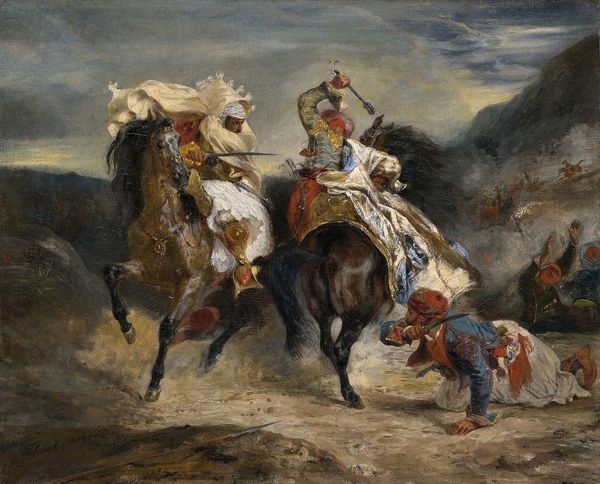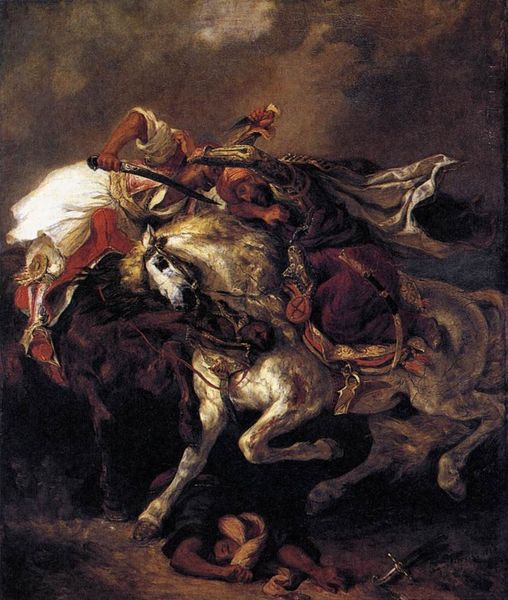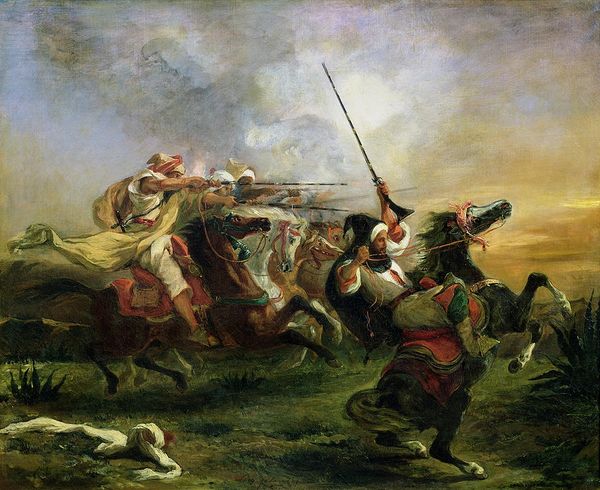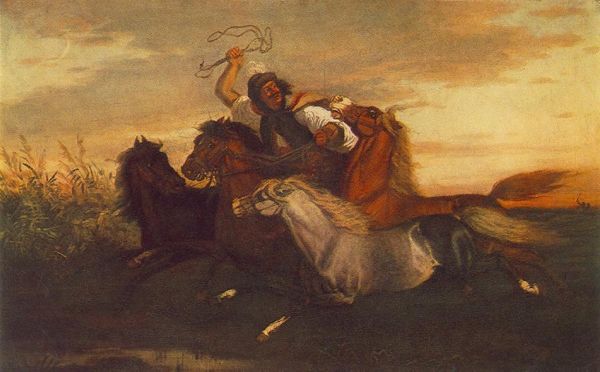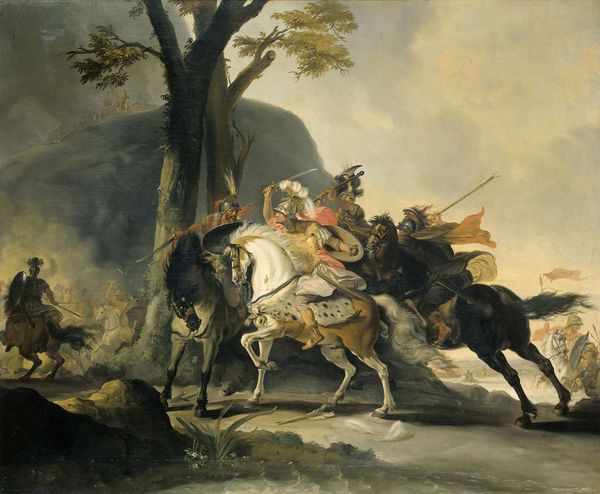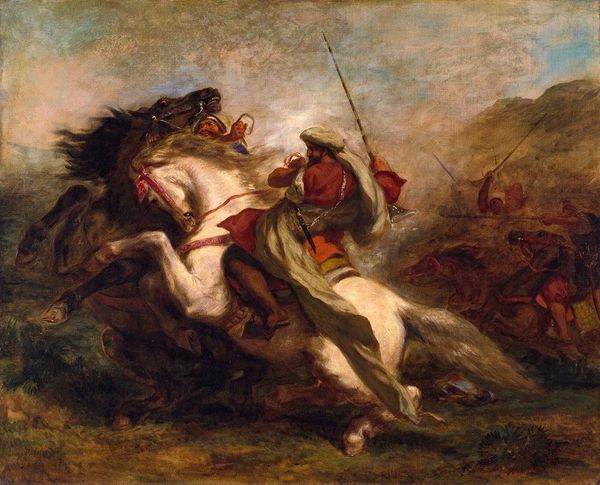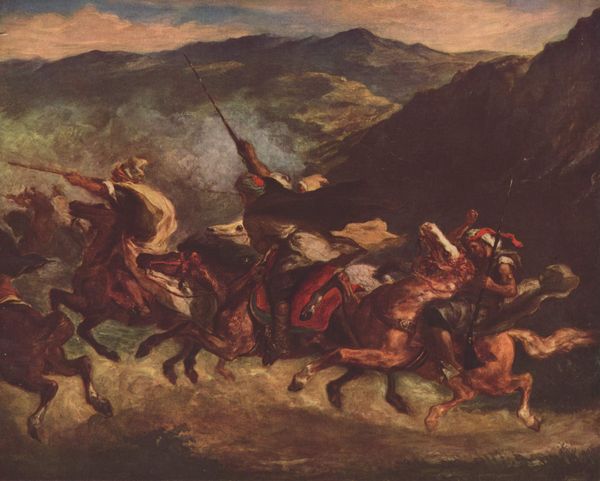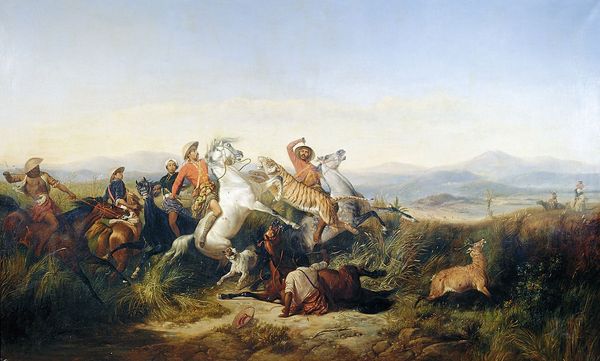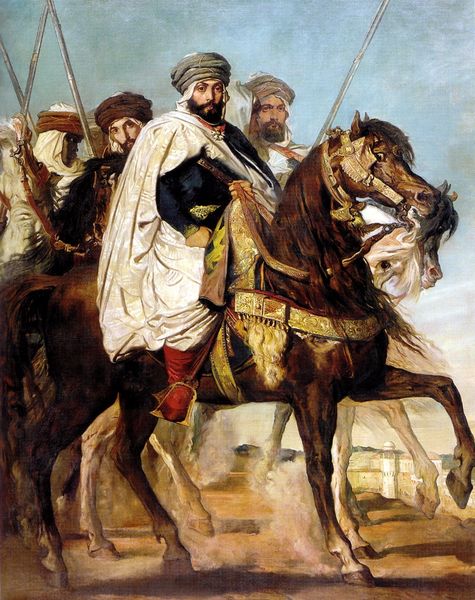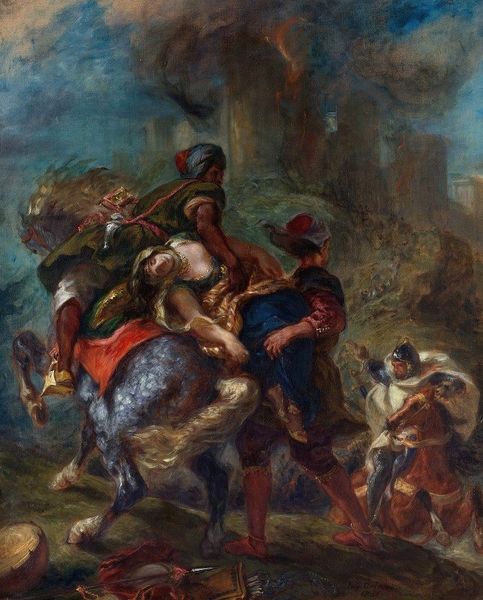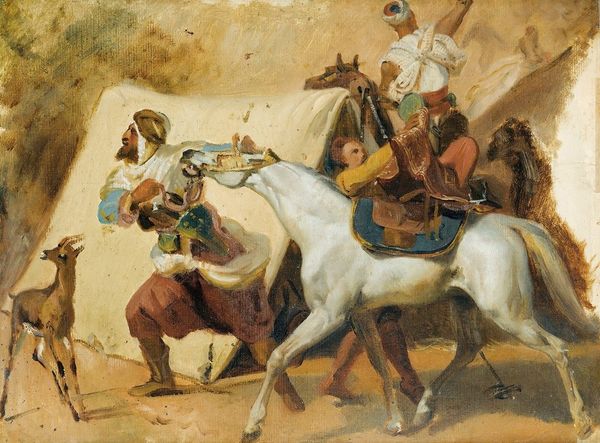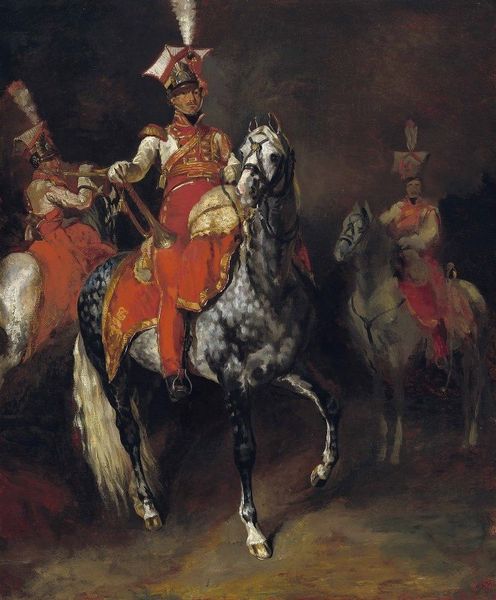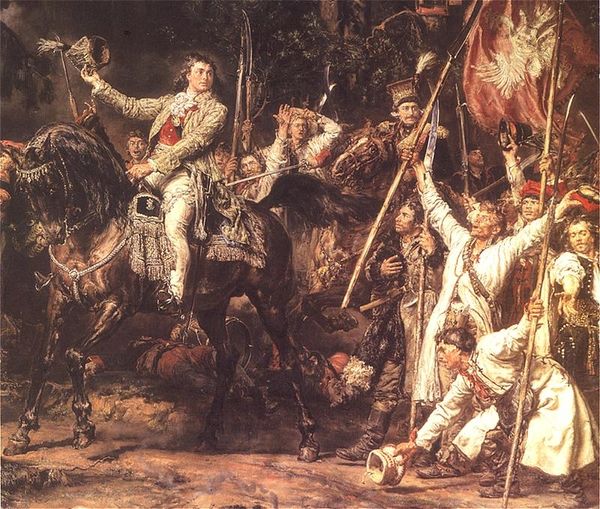
painting, oil-paint
#
narrative-art
#
animal
#
painting
#
oil-paint
#
landscape
#
figuration
#
oil painting
#
romanticism
#
orientalism
#
history-painting
Copyright: Public domain
Curator: Oh, it just gallops right off the canvas at you, doesn’t it? The urgency! Editor: It certainly does. This is Eugène Delacroix’s "Combat Between the Giaour and the Pasha," an oil painting he completed in 1826, currently held here at the Art Institute of Chicago. Immediately, the romanticism just surges to the forefront, right? It's got that wild, untamed feeling. Curator: Absolutely. I’m immediately struck by how free it feels, even amidst all this… well, chaos. Look at those swirling brushstrokes in the sky, and the way the figures are almost… melting into the landscape? It feels very dreamlike, almost as if we're peering into a memory of a battle. There is movement and emotion. Editor: Precisely. It’s also indicative of the orientalist style which romanticizes the “East” through a Western lens. Note the power dynamics inherent in its composition—the riders, elevated on horseback, literally and figuratively towering over figures on the ground. Curator: Yes, the details are fascinating – the ornate costumes, the weaponry… but what resonates most deeply is the passion, wouldn’t you say? It's more than just documenting a historical skirmish; Delacroix manages to express something elemental about human conflict and resolve. The horses, of course, also contribute greatly to this effect. Editor: Without question. And situating this within the history of orientalism, we have to remember the socio-political power dynamics at play. Delacroix wasn't just painting a battle, he was constructing an imagined East for a Western audience. How do we reconcile our aesthetic appreciation for its dynamism with the realities of colonial power? That tension is critical here. Curator: Ah, so the battle on canvas reflects a struggle of cultures. It feels like the artist asks you to consider a situation without choosing any side, doesn’t it? Maybe Delacroix believed painting to be not about answers, but to evoke even more powerful questions within us. Editor: And to perhaps recognize our role in perpetuating such unequal encounters, too. Delacroix allows us to re-imagine these violent encounters through both a painterly and a political lens, if only we dare to see them as such. Curator: It's really got that pulse. So much contained in a space – a great point to depart on. Thanks for making me look beyond.
Comments
No comments
Be the first to comment and join the conversation on the ultimate creative platform.
